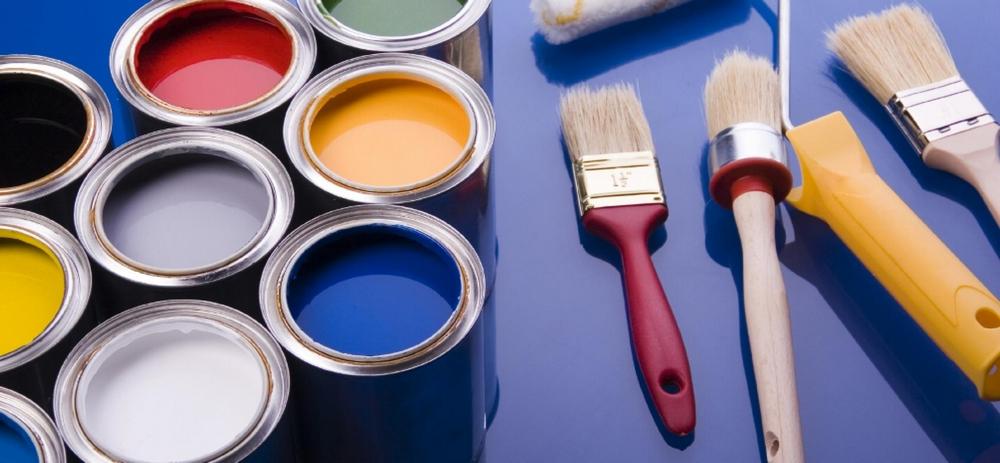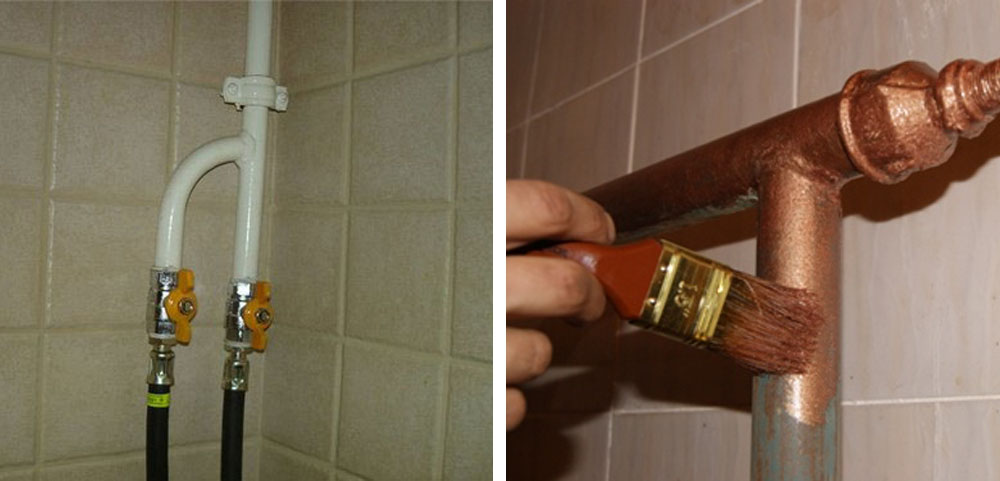Painting pipes in the apartment yourself - quickly and easily
It is impossible to imagine modern residential buildings and industrial structures without all kinds of communications: water pipes, gas pipelines, cables and so on. Currently, many pipelines (for example, cold and hot water) are made of plastic. However, metal pipes continue to be used. To increase the service life and to improve the appearance of these pipelines need painting.
As a rule, the reasons prompting a decision to paint pipes are:
- Poor pipe surface condition.
- Corrosion protection.
- Improving the interior of the room.
Training
The choice of the method of painting and the type of paint depends on the material from which the pipes are made, as well as on the conditions of their use. For example, communications located in the open air should be painted with lead minium, due to which a mask of iron oxide and lead is formed on the surface. This mask is able to protect pipelines from the damaging effects of the environment.
For painting pipelines usually use the following tools:
- alkyd enamel;
- water dispersion paint;
- acrylic enamel;
- Oil paint.
Acrylic enamel is resistant to high temperatures (up to 1000 degrees). It is also resistant to significant temperature changes. The advantages of waterborne paint are its fast drying speed, high adhesion to the surface and environmental friendliness. Pipes painted with waterborne paint can be used for many years. Such paint, in turn, is divided into two types: for cold and hot surfaces. That is, painting heating pipes will require the use of paint designed for a hot surface.
Acrylic enamel has the ability to preserve color for a fairly long period of time (it is resistant to ultraviolet rays). In addition, this paint makes the surface glossy. Before using this type of paint, the surface must be primed. And finally, oil paint is suitable for processing almost all types of pipes. However, over time, the original color is lost.
For example, for painting a rusty metal pipe, it is best to use enamel paint. In a day, the painted surface will be dry. Such a paint will protect the pipe from the effects of corrosion for 7 years. For plastic pipes, an aqueous emulsion or oil paint is the best option.
For painting we need the following:
- brush;
- paint;
- sandpaper;
- gloves
- rag;
- primer;
- cuvette;
- ladder (when working at height).
Before you start painting, it is advisable to clean the surface of the pipes from old paint. After that, you need to thoroughly clean the surface with sandpaper. There should be no rust. All cracks and irregularities must be repaired with putty. Before painting plastic pipes, they must be washed with warm water. After that, give them time to dry.
Old paint can not be removed if the surface of the pipe has no defects: damage, bulges, cracks. Otherwise, the old layer of paint is better to remove.
Now we determine how much paint is required. Here are some suggestions for this:
- For inaccessible places you will need more paint.
- The first coat needs more paint than the second.
- For a flat surface, less paint is needed than for a rough surface of the same area.
Painting
Before painting, the floor under the pipes is recommended to be protected with film or newspapers. We start painting from the top of the pipes and move to the bottom. So the layer will be uniform. Apply the first coat of paint on the entire surface - do not miss anything. Only after applying the first layer on the entire surface can a second one be applied. The application of two layers allows you to get a perfectly painted, even surface.
How to quickly paint the pipes? To save time, you can use a spray can or spray gun. In addition to saving time, it will give us a high-quality painted smooth surface. When working with the spray can, keep it at a distance of 30 cm from the surface and make zigzag movements in the direction from top to bottom. When using a spray gun to paint the battery, it is recommended to remove it in order to qualitatively process all hard-to-reach spots.
After painting, it is necessary to wait a certain time for the paint to dry and carefully ventilate the room.
Gas pipe painting
Painting of gas pipes is necessary to protect them from corrosion. In addition, according to the safety rules of gas distribution systems, industrial pipelines must be painted in a specific color, namely yellow. It is not necessary to paint yellow gas pipes inside residential buildings and apartments.
The following paints are used to paint gas pipelines:
- alkyd enamels;
- two-component epoxy paints;
- dispersions of zinc and aluminum powder in varnish;
- polyurethane paints.
When removing the old coating of gas pipelines, heating must not be used. You need to clean the surface with a metal brush. We thoroughly clean rust and old paint. After that, the surface of the pipe is degreased. This can be done with a rag soaked in gasoline or solvent. After that we proceed to painting. It must be started no more than 6 hours after stripping. Otherwise, a new layer of rust may form on the surface. First, with a brush, apply the first coat of paint. Then we wait a certain time for the surface to dry and apply a second layer.















